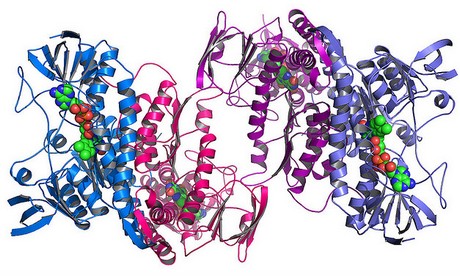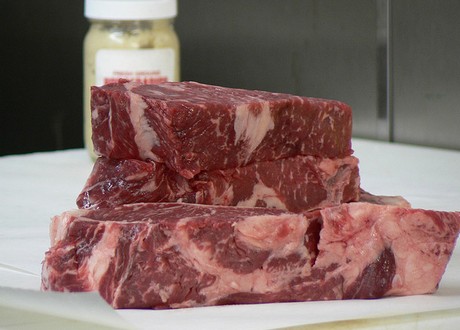What are Proteins?
Proteins are macromolecules and are considered as the most vital class of biochemical molecules, aside from carbohydrates and lipids that also play a significant role in life. Proteins are important due to the fact that it is the basis for the major structural components of human and animal tissues. But what are proteins? Proteins are basically composed of one or more unbranched chains of amino acids.
A typical protein is comprised of around 200 to 300 amino acids but there are certain instances wherein it can be larger (the largest is the protein found in cardiac and skeletal muscle known as titin; it contains around 34,350 amino acids in a single chain) or it could be much smaller (the smallest are called peptides).
Amino Acid and Protein Structure
The general structure of amino acid molecule includes an amine group, a carboxyl group of atoms and a side chain. The amine group contains a nitrogen atom wherein the two hydrogen atoms are attached to it and the carboxyl group contains one carbon, two oxygen and one hydrogen atom. There are 20 common amino acids, and these have different side chains— these vary in shape and include aspects such as branched chains of atoms, straight chains of atoms and rings of atoms. The molecules and configuration found in the side chain makes the difference of one amino acid from another. The side chains could include hydrogen, carbon, sulfur, oxygen and nitrogen atoms. The branched chain amino acids are leucine, valine and isoleucine. Such amino acids are essential for muscle structure. The 20 amino acids are linked together to form peptides, known to be smaller chains of amino acids. These peptides are then linked together to create larger protein structures.

Proteins are essential for the development of the structural components of the human body like muscles and organs. They also play a role in keeping the body’s immune system healthy, create and signal hormones, synthesize neurotransmitters and so much more. The human body is composed of thousands of different proteins that carry out numerous jobs. One should ensure to have a healthy supply of building blocks of proteins or amino acids in order for the body to be able to produce proteins.
Biological Significance of Proteins
Proteins play a major role in the body’s daily activities and living organisms cannot survive without them. Every single inch of the cells’ functioning depends on proteins including the locomotion of cells and organisms such as cilia, flagella and muscles. The catalysis of every biochemical reactions is completed by enzymes that contain protein. The structure of cells as well as the extracellular matrix, in which they are embedded, is largely made of protein, such as Collagen. The blood, responsible in transporting body fluids, is also dependent on proteins. Signaling molecules as well as the receptor for hormones are proteins and it is also proteins that that turn genes on and off to guide the differentiation of the cell and its later responsiveness to signals reaching it.
Protein classification of food
The protein source from food is classified into two: the complete and incomplete proteins. Complete proteins are called so, because they contain all the essential amino acids needed in keeping the body healthy and fit. Complete proteins are mostly found in animal products. Incomplete proteins are called so for the reason that they are limited sources of amino acids. These can be found in food sources such as grains, beans, nuts and vegetables.

Protein Requirements
The required amount of protein in the body is dependent on age, weight, sex and a person’s lifestyle. A typical person needs to have at least 10% to 15% of his or her total calorie intake in protein. This is approximately around 0.75 grams of protein in every kilogram of body weight per day. Four servings of mixed protein-source vegetables such as legumes, whole grains, nuts and seeds; or two or three servings of animal proteins; can easily provide the amount of needed proteins in the body. An individual who is under a high level of stress either through situations such as radiation exposure, cancer treatments or pregnancy, has a higher requirement for protein. Greater amount of protein is also needed by those who have undergone operations and those seeking to build their muscles.
Since the body doesn’t have the ability to store amino acids, it constantly breaks down and remakes proteins. This recycling process or the so-called “protein turnover” must be constantly fuelled by proteins in the diet. Excess amount of proteins and even some amino acids are normally converted by the liver into glucose, to provide energy.
References and Further Reading
Protein photographs: Protein Structure by argonne and Steak by Stuart Spivack.
Useful Information: Medline, Elmhurst, USDA Protein Data Sheet, Wikipedia.

